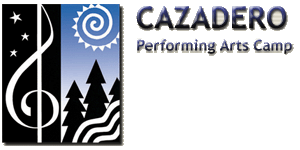Lesson Plan 6: Cones
and Seeds
(Grade Level 5-6-7-8)
First posted June 11, 2004 Last
updated June 11, 2004

Remember these points from the Lesson
Plan Homepage:
(1) These lesson plans are not rigid requirements,
but a starting point for the Nature Counselor's
plan for teaching a particular day's experience.
(2) The activity should be fun and emphasize
active learning on the student's part: ask a
question, don't just state a fact.
(3) You should employ hands-on as much as possible.
(4) Plan each session to also allow time for
making entries in the Nature
Journal. |
Prior to the
session
(1) Read the section on the web site on Redwoods,
Douglas-fir, and
Alder. You cannot teach
what you do not understand.
(2) Students always like collecting, and collecting
cones is fun. We are lucky that our cones are quite
variable.
(3) Scout out areas that have cones of each of the different
types. Be aware of poison oak,
as you will probably be going off regular paths to get
the Doulas-fir cones.
(4) You should have some other types of cones in the
Nature Program collection. Sugar pine cones are the
one that are >15" in size.
Session
(1) Start out with a walk toward your observation area.
Look around a bit then sit in the shade.
* What trees can you name? Can you draw a few in
your notebook?
* Can you identify any trees that are unknown, but
are different from the ones you can name?
* What is the purpose of a cone? What does it compare
to in a flowering plant?
(2) Start them in a likely direction to find the first
type of cone. The Coast Redwood, Douglas-fir, and Alder
trees will have collectable cones. You can help the
students to "see" what they are looking at
and help them focus their learning about cones by asking
them questions about what they see. Have them draw a
picture in their Journal.
(3) Move to another area and collect more cones.
(4) See if you can pry some seeds from the various
types of cones. There are some Coast Redwood seeds in
the Nature Program collection. Discuss how small the
seeds are compared to the mature trees. Be sure to return
the seeds to the collection.

References
None.

.......................................................................................................................
Back to the Lesson
Plan Homepage
|

